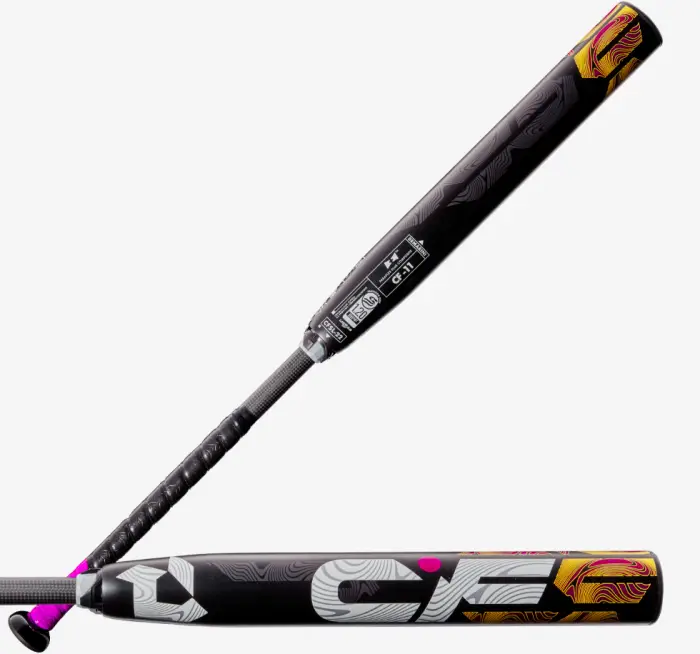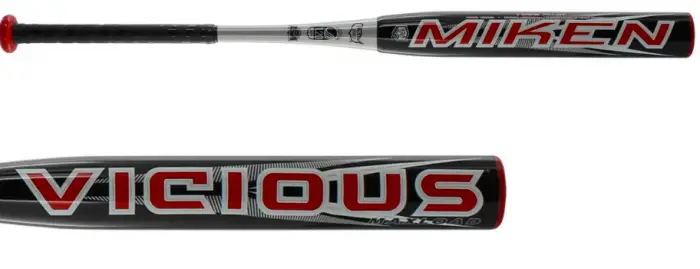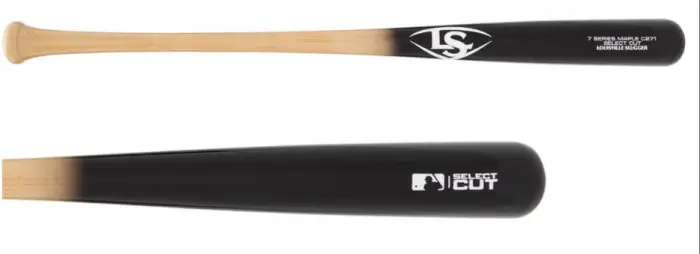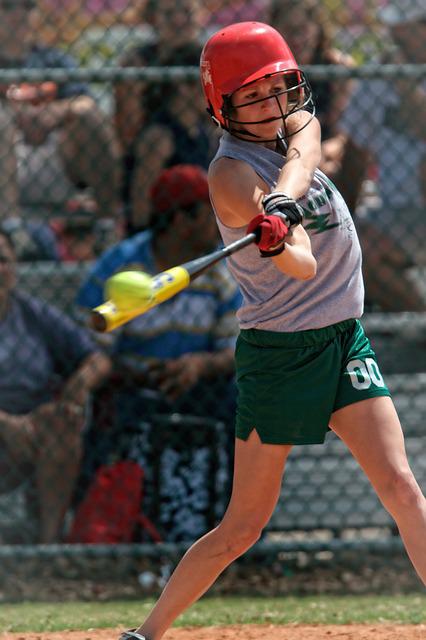Bats are an important piece of softball equipment, and how you choose one will significantly impact the quality of your game.
A good bat may assist and increase your performance, whereas a lousy bat can impair it.
As a batter, deciding how to choose the best softball bat might be one of the most crucial and challenging choices you’ll ever make.
Your bat does not seem to be resting perfectly in your hands.
Do you feel that your performance is becoming a little flat as a result of your bat not being the one you prefer?
Keep reading to get the idea of choosing a bat for the next match of your softball game.
How to Choose A Softball Bat
Every aspect of your game begins with the bat you choose to use, and if you want to finish on a positive note where you are pleased with your performance and form, every aspect of your game concludes with the bat you use too.
Listed below are some of the considerations you should make while selecting a softball bat:
1. Length According To Your Height

The length of bats appropriate for various players varies depending on their height.
The length of your bat might impact your swing technique and plate contact.
In the case of a tall player, a longer bat would most likely provide better comfort, and likewise, for a player of an average height or a shorter height, smaller bats are better.
To check whether the bat is of the right length or not, you can do the following drill:
Chest Check: Lie on your back with the bat’s bottom resting in the middle of your chest. The bat is long enough if you can grasp the bat’s barrel with one of your hands (preferably your dominant hand). (Don’t let the ball fall on your face).
Arm Check: Put the bat’s bottom parallel to your outstretched arm in the middle of your chest. The bat is of the correct length for you if you can easily touch the end of the bat with your fingertips without making an effort.
Palm Check: It is an adequate length bat in the middle of your hand rests comfortably on the knob of the bat while you maintain it straight next to your thigh while standing.
Make certain that the arm of the palm with which you are contacting the bat’s knob is also straight.
2. Weight Of The Bat
The weight of the bat varies depending on the model. Most models are available in 26 oz., 27 oz., 28 oz., and 30 oz. sizes.
You can use a heavier one if you are a stronger player, and you can usually get away with it.
Bats in the 28 oz. to 30 oz. ranges are best for larger players who like to hit the fences.
Bats in the 25 to 27-ounce ranges are best for petite or average-sized players or those who want to increase their bat speed.
For knowing whether the weight of the bat is correct for you, you can check by the following method:
You can grip the bat for 30 seconds with your extended arm, making a 90-degree angle with your body.
If your arm begins to shake or if you drop the bat, you will have your answer. (The bat is not for you).
If your arm remains out, try with a bat that is of a heavier size and do the same again until you find the one where your hand doesn’t drop the bat, or it doesn’t shake.
3. Drop Of The Bat
Drop is determined by the weight and the length of the bat you have selected.
Use your previous length and weight measurements to select a bat that fits your requirements.
A smaller drop indicates a heavy bat and maybe too much for the batter to manage while at the plate. The drop of the bats is chosen primarily according to the age you are.
Generally, bat producers recommend that children aged 8 and under use a -12 to -14 bat, children aged 8-14 use a -12 to -10 bat, and children aged 14 and beyond use a -11 to -8 bat.
4. Material Of Your Softball Bat
Aluminum alloy, composite, and wood are the basic materials utilized in the manufacture of softball bats.
You can choose from the following materials:
4.1 Composite Bats

Composite bats are often constructed from a blend of carbon fibers and graphite stacked together to form a composite material.
These bats are often light in weight, which allows you to have more grip on your swinging and boost the pace of your strikes.
Composite bats offer a bigger sweet spot and produce less vibration in the hands than traditional bats. As a result, they are also well-known for reducing the pain of inaccurate shots.
4.2 Aluminum Bats

Aluminum bats are more lasting, and they’re sometimes made out of two or more metals.
If you want to utilize the bat for a fast pitch, aluminum is an excellent choice since it allows a stronger hit than other materials.
Their sweet spot is smaller, but they’re good at any temperature.
Aluminum bats are often less priced, making them a desirable alternative for most players.
4.3 Wooden Bats

The characteristics of various wooden bats may vary depending on the wood variety.
The popularity of wooden bats has declined over time.
Whatever the length, weight, drop, or material, you would want the bat to feel good in your hand.
Importance Of Choosing The Right Bat In Softball

The first step in feeling secure when stepping into the batter’s box and swinging for the fences is selecting the right bat.
Choosing a right bat is essential for many reasons, some of which are listed below:
- It’s critical to have a bat that’s the right weight for you since this will help you to boost the power of your hits.
- You run the risk of sacrificing bat speed or swing mechanics if your bat is too long for you.
- You may reduce your plate coverage by giving away a piece of your strike zone if the bat is too short for you.
- If your bat is too heavy for you, there’s a risk you’ll drop it, or it’ll slip out of your hands while you’re playing.
- Handling a bat that isn’t quite perfect requires more work since you’ll have to make adjustments on the field in addition to scoring runs.
Types Of Softball Bats
There are many types of bats, each with its size, material(s), and other characteristics. Here are a few examples of softball bats:
1. Slow-Pitch Bats
These Softball Bats are 34 inches long and feature a 2 1/4 inch barrel diameter. The average weight of a slow pitch bat is between 24 and 30 ounces.
A perfect slowpitch bat is meant to strike a ball at roughly 25 miles per hour and is used for slugging.
2. Fast-Pitch Bats

Fastpitch bats are made to hit balls moving at a high rate. As a result, fastpitch bats are built for speed and fast response.
These have a barrel diameter of 2 1/4 inches with a drop of -8 to -13.
Aluminum, composite, or half-and-half bats in which the handle is composite and the barrel is made from an alloy, aluminum, or hybrid material, are available for fastpitch softball.
3. Youth Bats
There is no difference between a baseball bat and a softball bat at this level.
These bats are intended for players in the Major and Intermediate Division of the Little League, and the Junior Leagues, which comprise players aged 9-12, 11-13, 12-13, and 12-14, respectively.
Understanding the Basics of Softball Bats
Understanding the basics of softball bats is an essential step in choosing the right one for your game. Softball bats come in different types, sizes, and materials, and it’s important to know how these factors affect the bat’s performance.
There are two types of softball bats: slowpitch and fastpitch. Slowpitch softball bats are typically heavier, with a larger barrel diameter and a length of 34 inches.
Fastpitch softball bats, on the other hand, are lighter and shorter, with a barrel diameter of 2.25 inches and a length of 32 inches.
The parts of a softball bat include the barrel, handle, knob, and end cap. The barrel is the thick, cylindrical part of the bat that hits the ball, while the handle is the thinner part that connects the barrel to the knob.
The knob is the small, round part at the end of the handle that helps the player grip the bat. The end cap is the piece that covers the end of the barrel and can affect the bat’s weight distribution.
Softball bats also come in different materials, including aluminum, composite, and wood. Aluminum bats are durable, lightweight, and require little to no break-in time.
Composite bats are made of reinforced carbon fiber polymers and offer a larger sweet spot, but require a break-in period before use.
Wood bats are traditional and offer a classic feel, but are less durable and have a smaller sweet spot.
In summary, understanding the basics of softball bats involves knowing the differences between slowpitch and fastpitch bats, the parts of the bat, and the materials used in making them.
By having a basic understanding of these factors, you’ll be better equipped to choose the right softball bat for your game.
Factors to Consider When Choosing a Softball Bat: A Helpful Chart
Choosing a softball bat can be a daunting task, especially if you’re a beginner. There are several factors you need to consider before making your final decision, such as the bat’s length, weight, material, and grip.
To help you out, here is a chart that outlines the different factors to consider when choosing a softball bat.
| Factor | Description |
|---|---|
| Length | The length of the bat should be based on the player’s height. |
| Weight | The weight of the bat should be based on the player’s strength. |
| Material | The material of the bat can affect its performance and durability. |
| Barrel Diameter | The diameter of the barrel can affect the bat’s sweet spot. |
| Grip | The grip of the bat can affect the player’s comfort and control. |
When choosing a softball bat, it’s important to consider all of these factors to find the bat that best suits your needs.
Additionally, it’s always a good idea to try out different bats before making your final decision to ensure that you find the one that feels the most comfortable and natural for you.
Some Questions About Softball Bats

1. What is a Balanced Bat?
Bats with equal weights at both ends are known as balanced bats. This has the effect of making the bat seem lighter and allowing you to swing it more swiftly.
Additionally, these bats feature a bigger sweet spot, making them an excellent option for novices.
2. What is an End-Loaded Bat?
An end-loaded bat has a part of its load dispersed towards the barrel’s end.
3. What is ‘Drop’-in Softball Bats?
The drop is defined as the bat’s length and weight differential.
If a bat’s length is 40 inches and its weight is 20 ounces, then the bat’s drop is 20.
Conclusion
Selecting the perfect softball bat for your needs might help you improve your softball-bat performance.
It all comes down to how the bat feels in your hands and how you get used to a new bat.
Every new bat you purchase will feel a little unfamiliar and challenging to handle initially, but if it is the right size for you, you will feel it settling in your hands over time.
A bat is like a companion to a hitter in a softball match; a companion must never fail you. SO CHOOSE WISELY!


